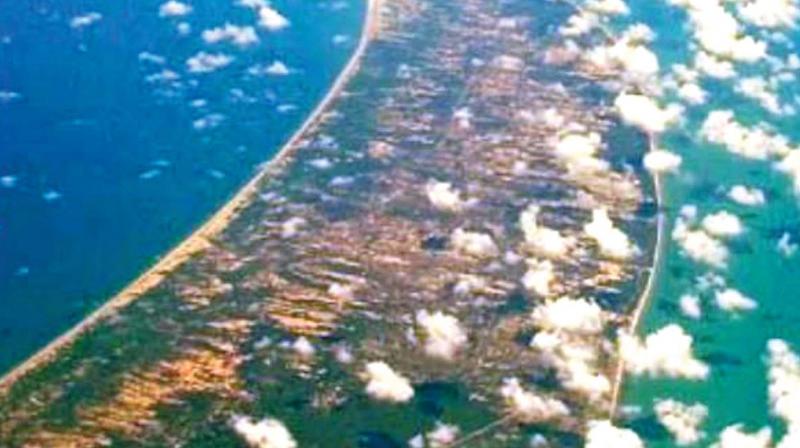Archaeological finds map life and times of ancient Tamils
One of the biggest discoveries in the recent times is the Keezhadi excavation.

Chennai: If the Archaeological Survey of India (ASI) discovery of the remains of the Sangam era at Keezhadi in Sivagangai district in Tamil Nadu that could perhaps rival the Mohenja-Daro, place the state on the global civilisation map, 2017 also saw the American archaeologists - though vindicating the age-old belief of Hindus that Lord Ram had built the bridge in Rameswaram - make the state a treasure house of archaeological findings.
Also, the year saw the Tamil Nadu archaeology department unearth about 13,000 artefacts at Azhagankulam (Ramanathapuram district) clearly pointing out to the Sangam age site. Although it had previously received little attention, archaeological excavations in the past few months focused on discovering the grandeur of the past, and the rich finds help to map the life and times of the ancient Tamils.
The state archaeology department, which completed the eighth season of excavation at Azhagankulam in September unearthed about 13,000 artefacts and found evidence to show that the site could date back to Sangam age. The antiquities and vestiges obtained from the site include ivory objects, semi-precious stone beads, copper coins, silver punch-marked coins, carnelian, quartz and crystals, and they throw light on the lifestyle and socio-cultural activities of the ancient Tamils.
The broken Roman amphora jars, Mediterranean pottery, embossed Roman potsherds, copper coins, Chinese Celadon ware, rouletted ware, black, red and grey potsherds and terracotta plates obtained from the site indicate that the coastal village once functioned as an important trading post between the Pandyas and the Romans. Like Keezhadi, this site too could date back to the Sangam age.
One of the biggest discoveries in the recent times is the Keezhadi excavation that points out to the ancient civilisation on the banks of Vaigai river. The carbon dating of charcoal found at the Keezhadi site in February 2017 established that this settlement belonged to 200 BC and the excavations proved urban civilisation had existed in TN since the Sangam age. The Union culture ministry had even announced that third phase excavation for a three year period would begin soon and sanctioned ' 40 lakh for the purpose.
The ASI in 2013-14, carried out explorations at 293 sites along the Vaigai river valley in Theni, Dindigul, Madurai, Sivagangai and Ramanathapuram districts but Keezhadi in Sivagangai district was chosen for excavation. The artefacts unearthed by ASI in the second phase excavation at Pallichanthai Thidal of Keezhadi pointed to an ancient civilisation. Samples sent from Keezhadi have been identified as nearly 2,200-year-old. The remains of brick homes and a deep terracotta ring well with 13 steps - indicate overwhelming evidence of a very civilised society where urban planning mattered most.
And as the year comes to an end, the most interesting conclusion on TN's rich 'living' heritage comes from the Science Channel, owned by Discovery Communications, which claims Ram Setu is not a natural formation but a man-made structure. Chelsea Rose, an American archaeologist, is seen saying: “The rocks on top of the sand actually pre-date the sand. So there is more to the story.”

